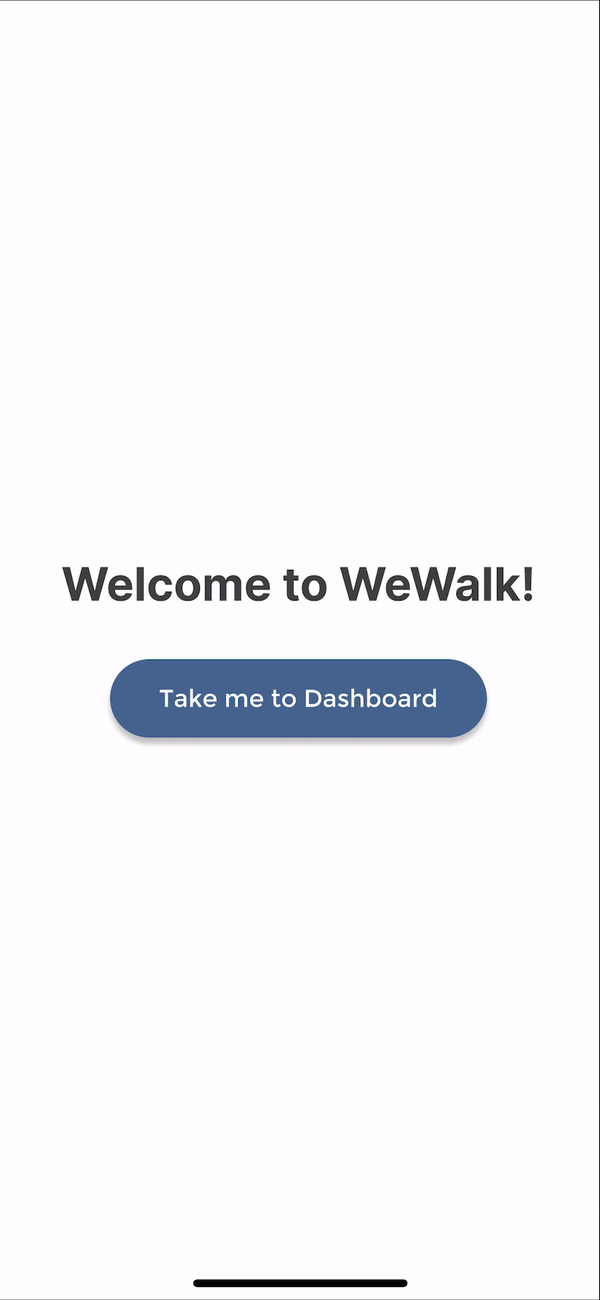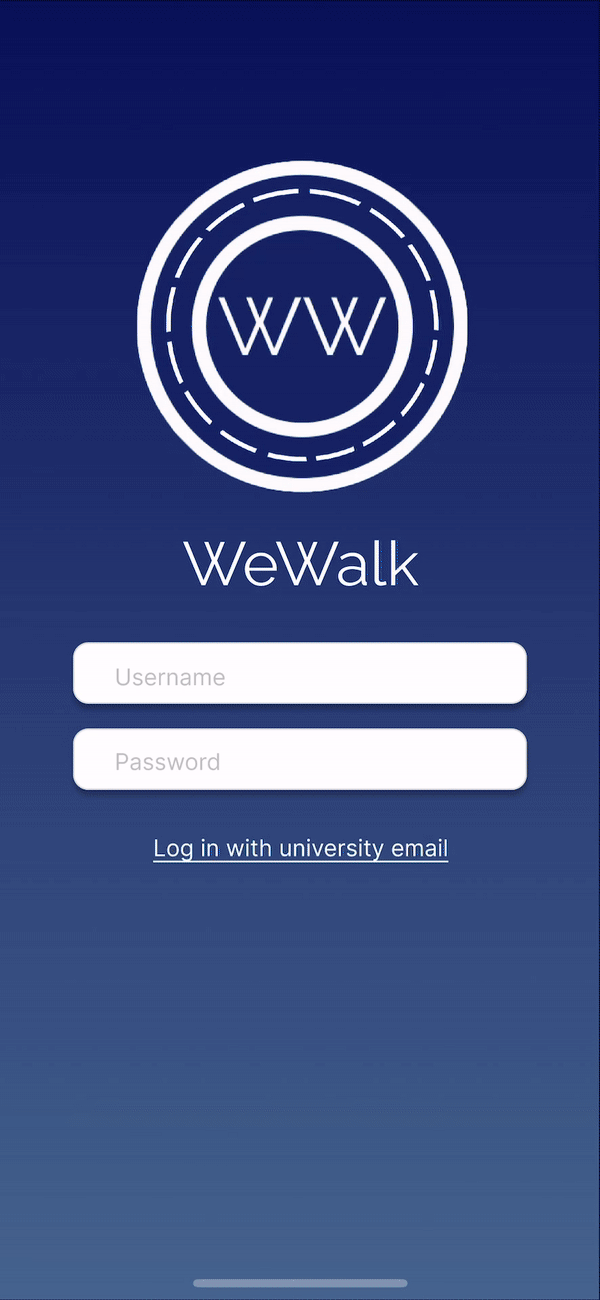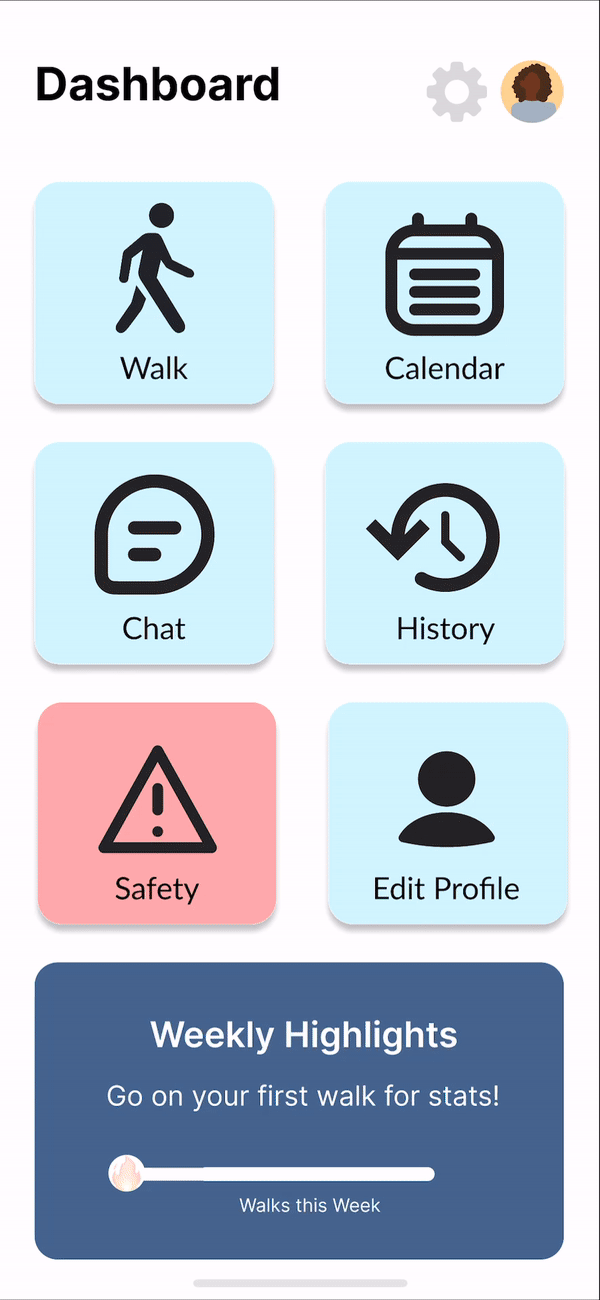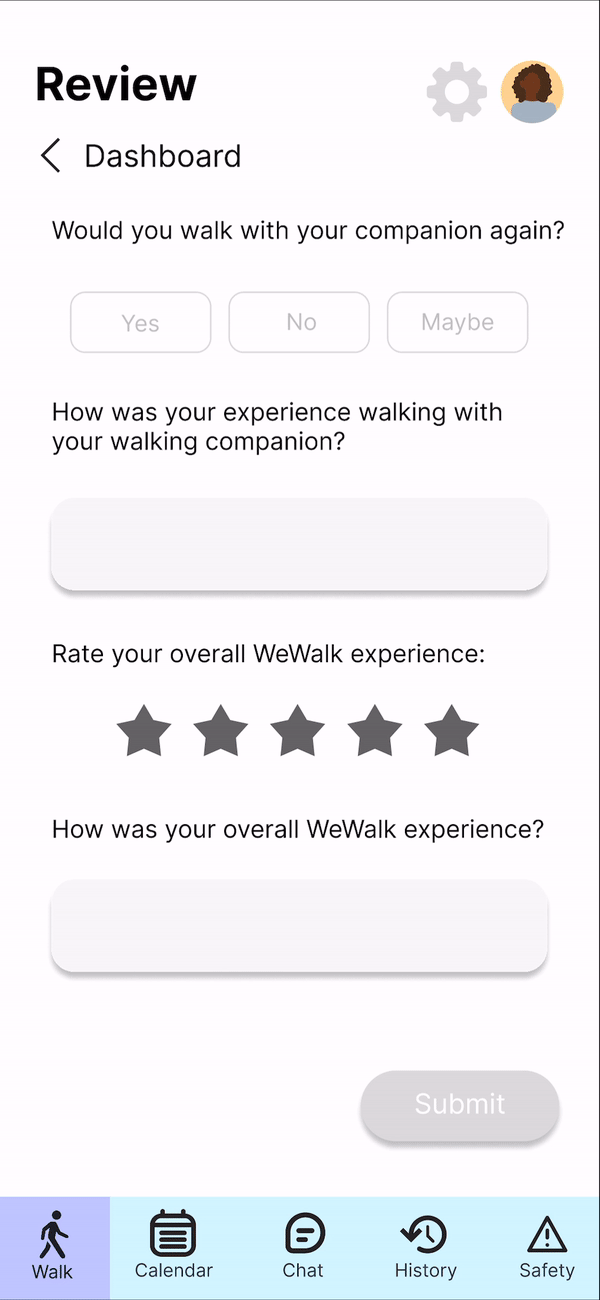WeWalk



As students living in Berkeley, my classmates and I are aware of the prevalence of crime in the city. As a result, we often feel uncomfortable and concerned for our safety when walking alone in the city, especially at night. To address this pressing issue, we decided to design an app that could work towards ensuring safety and building community among UC Berkeley pedestrians.
Duration
April - May 2023
Roles
-
Conducted user interviews with UC Berkeley students to grasp their safety concerns and app preferences.
-
Created a user journey for a clearer vision of the user experience.
-
Collaborated on feature design and implementation to optimize user preference while adhering to design principles.
-
Developed a high-fidelity prototype using Figma.
Skills
-
User-centered research
-
User interviewing
-
Collaborative decision-making
-
App design and testing
-
Creative design thinking
-
Collaboration and communication
-
Innovative wireframing
The Problem: Crime in Berkeley

Many UC Berkeley students have concerns for their safety, especially during the night. This issue can particularly affect female students, who do not feel comfortable walking alone at night, and prefer walking with a companion. Often, it can be difficult finding a buddy who is walking in the same direction as them. Although current solutions such as BearWalk Night Safety Services and public transportation exist, there are several limitations such as long wait and response times, delays, and lack of 24/7 operation. These drawbacks prevent students from using these services, making them walk around the city alone at night.
Target Audience: UC Berkeley students, specifically females
How might we design an app to increase student safety by allowing students to easily find peers to walk with at any time of the day?
The Solution: Student-Safety App
By matching users with someone of similar interests and personalities and someone they feel comfortable with, and individuals who are walking in the same direction, we hope to establish a level of comfort for UC Berkeley students when walking from one place to another. With student verification, facial recognition, and 24/7 service, our app will allow students to effectively find peers they can trust to walk with at any time of the day. This app will help facilitate sustainable communities and address gender equality.
User Research
User Interviews
We asked users questions regarding their level of comfort while walking on campus, their safety concerns, their general nighttime walking procedure, any services they use, as well as their thoughts and preferences for an app that connects users with a walking companion.
Findings
High overview:

After placing the user responses into categories, we narrowed down and summarized the findings further:
Location
Walking on campus feels safer than other places in the city.
Location impacts level of comfort.
Having a friend/acquaintance while walking at night is preferred.
Limitations with Current Services
Although BearWalk is safe and reliable, it is available only for limited hours.
BearTransit helps reduce walking times, but is not available during the night.
Although BearWalk is safe and reliable, there are also long wait times.
Preferences and Concerns
Reliable privacy/safety measures.
Temporary location-sharing.
Gender does not matter as much, when looking for a walking companion.
Prefer a walking companion that they feel comfortable with and having similarities with.
Some sort of rating system that ensures more confidence in users when they are matched with a companion.
Great way of making friendships within the UC Berkeley community, especially for freshmen.
App Overview: WeWalk


WeWalk allows UC Berkeley students to find and connect with other student users near them to make walking to their desired destination safer. The app matches users with a walking companion based on trip times and location, companion filters, and walk preferences, and adds an additional level of security by requiring CalNet verification. With features such as messaging, a safety button, and conversation prompts, WeWalk aims to make students' walking trips in Berkeley safer, while also building community and life-long friendships.
Name Symbolism
The main purpose of this app is to create a sense of community within the students at UC Berkeley, as well as ensuring safety and security as a result of increased crime in the city. We decided to go with the name “WeWalk” for our app, as it effectively explains the purpose of the app. The “We” at the beginning of the name conveys our mission of building and strengthening a sense of community among UC Berkeley students.
Logo Design
For the color scheme, we decided to go with the color blue as it symbolizes trust, loyalty, sincerity, and confidence, which relate back to the app’s purpose and mission. For the logo design, we chose to write the app name’s initials in the center of a roundabout. The roundabout street relates to safety, and the circular nature of the street relates to the idea of unity and bonding. Taking these points into consideration, the app logo conveys feelings of security and belonging within the UC Berkeley community.

User Journey
User Overview
Olivia Turner is a junior transfer student majoring in Data Science at UC Berkeley. She is a commuter student from Richmond, California. To get more involved in the campus social scene, she attends parties on the weekends. Many times, she finds herself leaving parties late at night. She feels nervous and vulnerable walking back to the BART station can’t afford to pay for an Uber ride. She wishes she could find other students heading in the same direction as her to have as company, as this would make her feel safer and more comfortable. Her top priorities are safety, friendship, and budgeting.
First Iteration


Low-Fidelity

High-Fidelity


The user’s task is to create an account with WeWalk to find a walking companion that they can trust to walk them home after social events. They begin on the “Create an Account Page”, where they input basic information such as their name, gender, university affiliation, and a personal bio. From there, they can curate a walking schedule that they can share with potential companions to determine meeting times and locations.

After their account has been created, they are taken to their “Dashboard,” which gives them the option to access the “Walk,” “Calendar,” “Chat,” “History,” or “Safety” pages. A user who is looking to get matched with a walking companion can tap on the “Walk” option, where they can indicate their to and from destinations on the “Walk” page and apply filters for their walking companion.
The user is then provided with three potential companions based on their chosen destination. While some are active and have nearby destinations, others may be volunteers who are “flexible” with their destinations and are simply available to help walk others home. Once they select their preferred walking companion, the user will place a request. The walking companion will then receive a notification regarding the user’s walking request, which they can either approve or deny. Granted their request, the user is then able to chat and call the companion, which allows them to arrange a meeting time and location, as needed.

Once the user and their walking companion has started their walk together, a live view of the user’s walk is displayed, so they are aware of their location and surroundings at all times.the user is given a set of example prompts that they can talk about with their companion, if there is any feeling of tension or awkwardness during the walk. This will help in enabling a sense of friendship and community. At any time during their walk (and even while using the app in general), they are able to press a “Safety” button, which can allow them to call 911 or chat with authorities, in case of an emergency.

At the end of their walk, the user can rate their walking companion to provide feedback on them and their walk in general. Users are also able to access the “History” page to view their past walks, as well as the “Chat” page to make friends and personally arrange walks. The “Chat” feature will allow students to feel a sense of belonging, friendship, community, and safety as they navigate through university life.
Design Considerations



The user is presented to create an account with WeWalk so that they can be matched with a walking companion. They begin on the “Create an Account Page”, where they input basic information such as their name, gender, university affiliation, and a personal bio.
The "Create Calendar" button allows students who are busy to have the option to create a walking schedule. This allows them to have a comparable timeline with other students that will help with a smoother, routined matching process and give students a walking companion that hopefully becomes a friend.
The “Dashboard” and menu bar include icons that accurately describe the functionalities of the buttons, so users can easily determine and understand their purposes. As a result, they are able to effectively and intuitively select the option that corresponds to their desired task.



The app presents information on the “Matched Results” in an organized, easy-to-read manner, with labels bolded and related information grouped together. This allows users to quickly and efectively read details about potential walking companions.
Mutual acceptance of a walking request to share location and chat with each other is fundamental to maintaining safety and user control and freedom. The app's design ensures that the user has the liberty of either sharing or concealing their information, such as their location.
Once the users are matched, they are then able to chat with each other. This can help with coordinating meeting points and future walks, ultimately creating friendships.



Taking into account the user interview responses, we understand and realize that some people may find it uncomfortable and awkward to make conversation with someone they don't know. As a result, we designed a "Prompts" page that gives users potential conversation starters to bring up with their walking companion. This will help in starting new friendships, ultimately building community.
Since the main purpose of this app is to enable a sense of safety and security for UC Berkeley students, our team understands that emergencies can happen at any time during the day. As a result, we decided to place a “Safety” button in accessible locations throughout the app in a vibrant red/pink color, so that users can quickly and efficiently access resources to contact authorities in the case of an emergency.
Taking feedback from the user interviews, we included a "Review" page so that users can provide feedback about their walk and walking companion. We decided not to make the ratings visible to anyone as this could possibly impact one's self esteem. Instead, we chose to keep reviews and ratings concealed to help with the algorithm for matching walking companions, as well as help in flagging users who could possibly pose a threat.
Design Tradeoffs
Although we believe it is important to respect user privacy, we felt the need to require all users to set a profile picture as a way of ensuring security for companion matching.
Users are given the option to share their location with the app. Sharing location will yield more accurate and filtered results and recommendations, which users are informed about.
Although we do not want to use the system of “rating” users, we felt that this would be useful with the app’s mission and purpose. This type of information could help in potentially detecting dangerous users, and thereby dealing with them accordingly. As we do want to keep this type of information confidential, the app will not disclose ratings anywhere on the interface. Instead, this type of information will help in more accurate results, filters, and matches in the user matching process.
Future Updates
Allow commuter students to connect with other commuters and arrange commuting times together.
Provide more incentives and rewards to users with badges or points so that they are encouraged to walk between places with a companion.
Allow users to sign in as either a walker or volunteer so that their app setup and preferences are based on their role.
Enable users to request a walk as a group.
Allow users to report any unsafe situations that they encounter or observe and have the map highlight the impacted areas.
Expand to other educational institutions with the goal of instilling safety and connecting communities.
Summary
.png)
